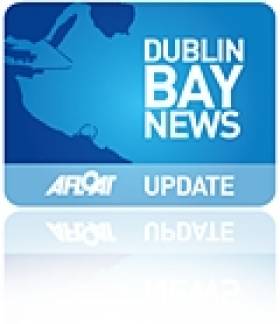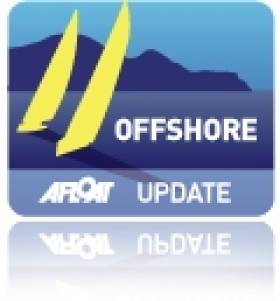Displaying items by tag: Roland Jourdain
Dun Laoghaire Earmarked For Stop on First MOD70 Euro Tour
#DUBLIN BAY NEWS - The inaugural European Tour for the MOD70 trimaran class is set to come to Dublin next summer, pending agreement with the relative authorities in January.
The Irish Times reports that the National Yacht Club is at the head of efforts to include an event in Dun Laoghaire on the first tour for the new 70-foot design.
But apart from the Dun Laoghaire Harbour Company, there has so far been little support from local or national authorities despite organisers waiving the €250,000 franchise fee.
John McKenna of tour organiser OC Thirdpole says he is determined to ensure Dublin is included, and that costs will be borne by the competing teams.
However, he added: "The tour needs to be assured that it will have a major public occasion in Dublin if it is to commit to coming here."

The MOD 70 fleet – plans are afoot to bring the fleet to Dun Laoghaire and moor them off the National Yacht Club at the Carlisle Pier
As previously reported on Afloat.ie, Dublin Bay welcomed its first MOD70 earlier this year when yachtsman Roland Jourdain tested his Veolia Environnement trimaran ahead of the Fastnet Race.
The Irish Times has more on the story HERE.
Photo Exhibition: People of the Sea / Gens de la Mer
Gilles Perrin selected his subjects by visiting harbours and piers in locations such as Cobh, Baltimore, Castletownbere and Schull. The work was conducted through the Artist in residency programme at Sirius Arts Centre, Cobh and later by a similar residency position at the West Cork Arts Centre which took place over a few months in 2007 & 2008.
People of the Sea is organised in partnership with Veolia Environnement, also the name given for a new MOD70 class (Multi One Design). Veolia Environnement is one of only 12 such high-spec performance yachts which visited Dublin Bay in the summer calling to Dun Laoghaire and a transit of Dalkey Sound (PHOTO's). She was in Irish waters under the skipper Roland Jourdain and crew ahead of her first test, the Fastnet Race held in mid-August. To read more about Veolia Environnement click HERE and also www.canyousea.com/en/
The other participants of the exhibition which have lent their support are the Sirius Arts Centre, The Arts Council, Cork County Council and The West Cork Arts Centre, and iophotoworks. For more information about Perrin who has a master's Degree in photography visit www.art-contemporain.eu.org/perrin/
- Schull
- Baltimore
- Cobh
- castletownbere
- Dublin Bay News
- Dun Laoghaire Harbour
- Fishing News
- Cork County Council
- Sailing news
- Dalkey Sound
- Veolia Environnement
- French Photographer Gilles Perrin
- Gilles Perrin
- People of the Sea/Gens de la Mer
- Alliance Francaise Dublin
- French Cultural Centre Dublin
- Irish Fishing Harbours
- Sirius Arts Centre
- The Arts Council
- West Cork Arts Centre
- The Fastnet Race
- MOD70 class
- Multi One Design
- Irish Fishing Industry
- Roland Jourdain
Roland Jourdain To Visit Dublin With New MOD70
Renowned yachtsman Roland Jourdain will be visiting Ireland next month to show off his new vessel ahead of the Fastnet Race.
A veteran of 60-foot monohulls, Jourdain will be in Dun Laoghaire from 4-5 August to test his new Veolia Environnement MOD70 trimaran, as well as select crews for next year's transatlantic races.
His new MOD70 is the second in a series of 12 that will begin racing next summer when six of the fleet race from New York to Brest in France. But the first test will be at the Fastnet, where he will race the only other MOD70 on the circuit.
The Veolia Environnement MOD70 will be berthed adjacent to the Royal St George Yacht Club for anyone curious to have a peek. For more details on the vessel and on Roland visit www.multionedesign.com and www.canyousea.com.
































































